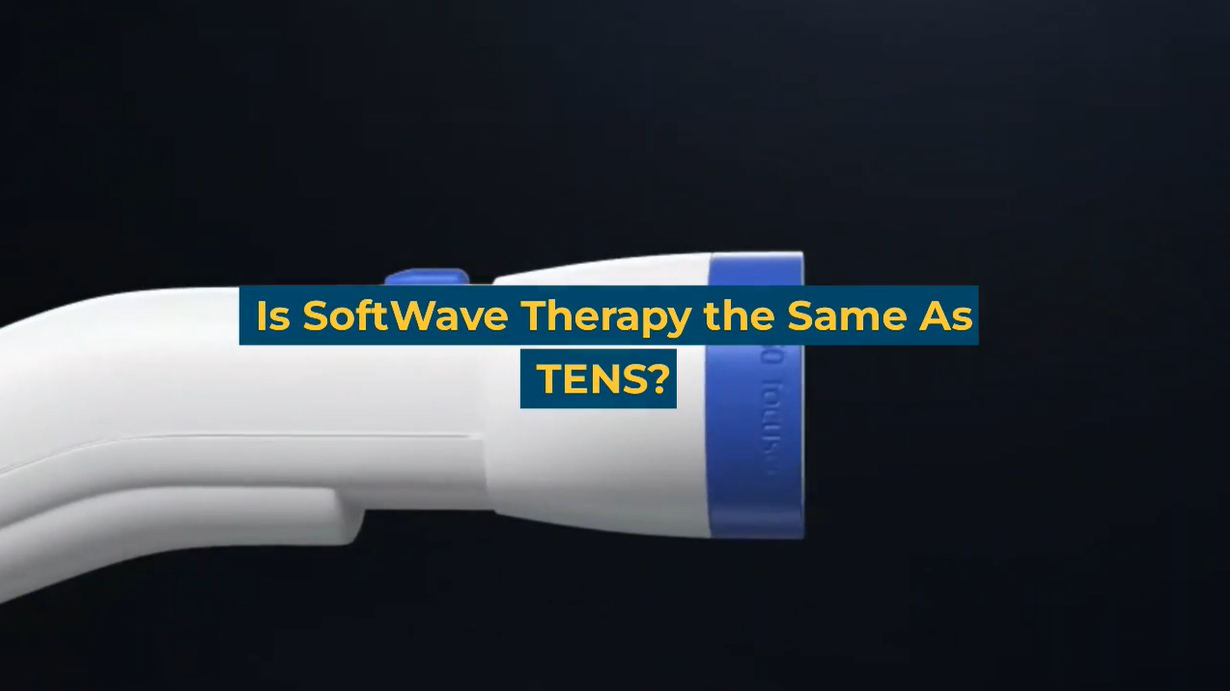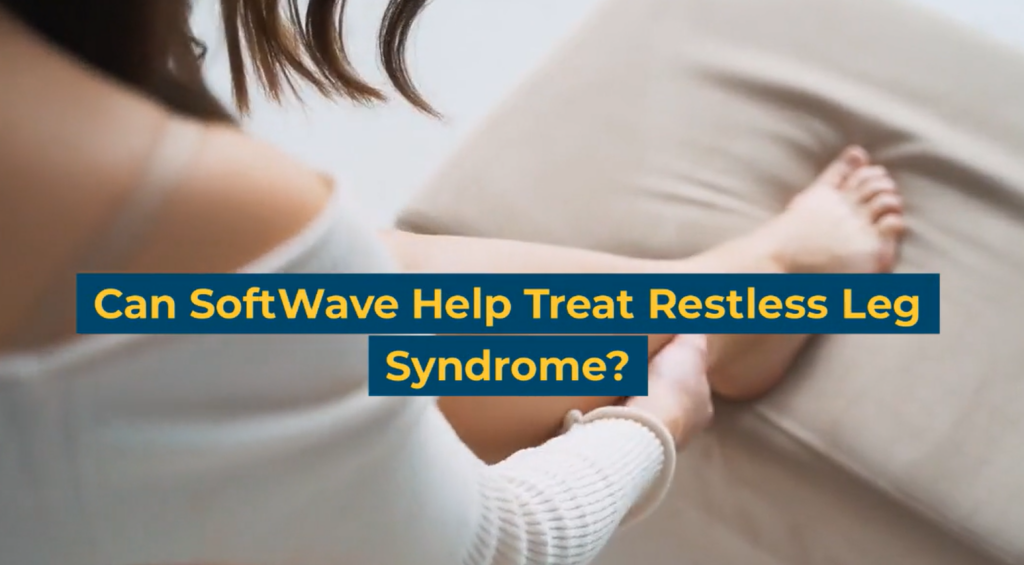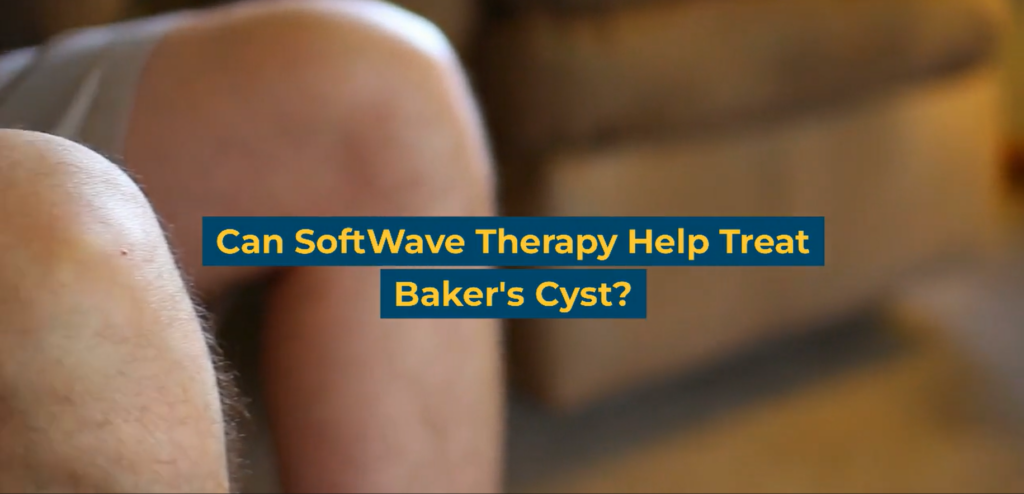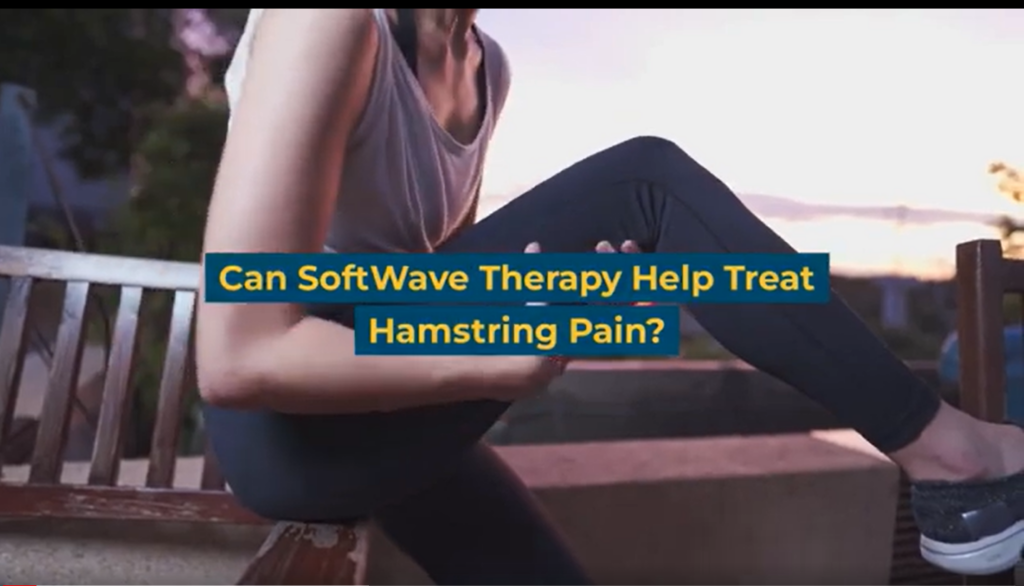Is SoftWave Therapy the Same As TENS?
Living with chronic pain can be an overwhelming experience. However, the advent of non-invasive treatments has ushered in renewed hope for those seeking relief from pain. Among these groundbreaking options, two have risen to prominence: SoftWave therapy and Transcutaneous Electrical Nerve Stimulation (TENS). While both approaches alleviate pain, their distinct mechanisms and wide-ranging applications distinguish them from one another. In particular, SoftWave therapy stands out as an innovative solution that aims to target and address the underlying causes of pain, promising lasting relief, and transformative outcomes.
New Patient Special
Try SoftWave for just $69 at a clinic near you and learn if you’re a candidate for full treatment
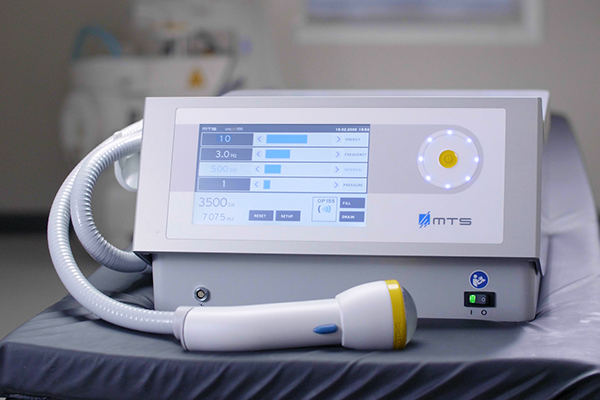
SoftWave Therapy VS TENS
What is SoftWave Therapy?
SoftWave therapy is an innovative approach that utilizes patented technology to deliver broad-focused shockwaves to the affected area. These shockwaves penetrate deep into tissues, promoting healing and pain reduction.
These shockwaves set in motion a process called “mechanotransduction.” This intricate phenomenon involves the conversion of mechanical stimuli into biochemical changes at the cellular level. Through mechanotransduction, a cascade of healing responses is triggered, including the reduction of inflammation, enhanced blood circulation, and the remarkable stimulation of new blood vessels and tissues. In essence, SoftWave therapy harnesses the power of mechanotransduction to unlock the body’s inherent healing capabilities, paving the way for transformative outcomes.
The therapeutic applications of SoftWave therapy are broad, ranging from musculoskeletal conditions and sports injuries to wound healing and neurological pain syndromes. This versatile treatment option has garnered attention for its effectiveness and minimal invasiveness. Furthermore, unlike other therapies that merely mask pain, SoftWave therapy addresses the underlying cause, providing long-lasting relief.
What is TENS?
TENS, on the other hand, stands for Transcutaneous Electrical Nerve Stimulation. It involves the use of a small device that delivers low-voltage electrical currents to the nerves through electrodes placed on the skin. The goal is to disrupt pain signals, providing temporary relief.
TENS is commonly used for the temporary relief of pain, such as muscle aches, joint pain, or nerve-related discomfort.
How Does SoftWave Therapy Differ From TENS?
While both SoftWave therapy and TENS are non-invasive and aim to reduce pain, their mechanisms of action differ significantly. TENS primarily works by stimulating the nerves and interfering with pain signals. In contrast, SoftWave therapy uses focused sound waves to stimulate tissue repair, promote blood flow, and reduce inflammation.
The Advantages of SoftWave Therapy Over TENS
SoftWave therapy offers several advantages over TENS, making it an appealing option for individuals seeking effective pain relief. Here are some key differentiating factors:
Larger coverage and depth of treatment: SoftWave therapy targets a broader area and penetrates deeper into tissues, providing a more comprehensive treatment compared to TENS, which has a more localized effect.
Minimal invasiveness and negligible side effects: SoftWave therapy is non-invasive, meaning it does not require incisions or injections. This reduces the risk of complications and side effects, making it a safer option for individuals with contraindications to other treatments.
Accelerated healing and tissue regeneration potential: Unlike TENS, SoftWave therapy promotes tissue regeneration and healing. It stimulates the body’s natural healing process, enhances blood flow, and encourages the repair of damaged tissues, resulting in long-term benefits. The regenerative effects of SoftWave therapy also make it a valuable tool in post-surgical recovery and wound healing.
Customizability and flexibility for personalized treatment plans: SoftWave therapy can be tailored to meet individual needs. The intensity and frequency of the sound waves can be adjusted based on the patient’s condition, ensuring an optimal treatment experience.
Applications of SoftWave Therapy
SoftWave therapy has found applications in various fields, revolutionizing the way we approach pain management. Here are some areas where SoftWave therapy has shown promising results:
- Musculoskeletal conditions and chronic pain management: SoftWave therapy has been effective in alleviating chronic pain associated with conditions such as arthritis and tendinopathy. By targeting the affected areas, it can significantly improve mobility and reduce discomfort.
- Sports injuries and athletic rehabilitation: Athletes often face injuries that can hinder their performance. SoftWave therapy has been increasingly used for sports-related injuries, aiding in faster recovery, reducing inflammation, and promoting tissue healing.
- Wound healing and post-surgical recovery: SoftWave therapy has demonstrated its effectiveness in wound healing and post-surgical recovery. It can help reduce pain, accelerate tissue regeneration, and minimize scarring, leading to improved outcomes for patients.
- Neurological conditions and pain syndromes: SoftWave therapy has shown promise in treating neurological conditions such as neuropathic pain.
- Emerging possibilities and ongoing research in SoftWave therapy: The field of SoftWave therapy continues to evolve, with ongoing research exploring its potential applications. Exciting developments include its use in treating conditions like erectile dysfunction, cellulite reduction, and more.
Try SoftWave Therapy: A Revolutionary Path to Pain-Free Living
SoftWave therapy stands out as an innovative and effective solution for pain relief. Its unique mechanism of action, coupled with its advantages over TENS, makes it a viable option for individuals seeking a non-invasive treatment with long-lasting results. Healthcare professionals and patients alike are encouraged to explore SoftWave therapy as a cutting-edge approach to pain management. With its broader coverage, minimal invasiveness, and potential for accelerated healing, SoftWave therapy opens new possibilities for a pain-free future.
Find your nearest SoftWave provider today and experience the transformative power of this treatment. Consult with a healthcare professional to determine if SoftWave therapy is right for you and take a step towards a pain-free life.
Disclaimer: The information provided in this blog is for educational and informational purposes only and is not intended as a substitute for professional medical advice, diagnosis, or treatment. The content provided in this blog should not be used to diagnose or treat any health problems or illnesses. Always consult with a qualified healthcare professional before making any changes to your healthcare routine or treatment plan.
New Patient Special
Try SoftWave for just $69 at a clinic near you. No drugs. No surgery. Just relief.


